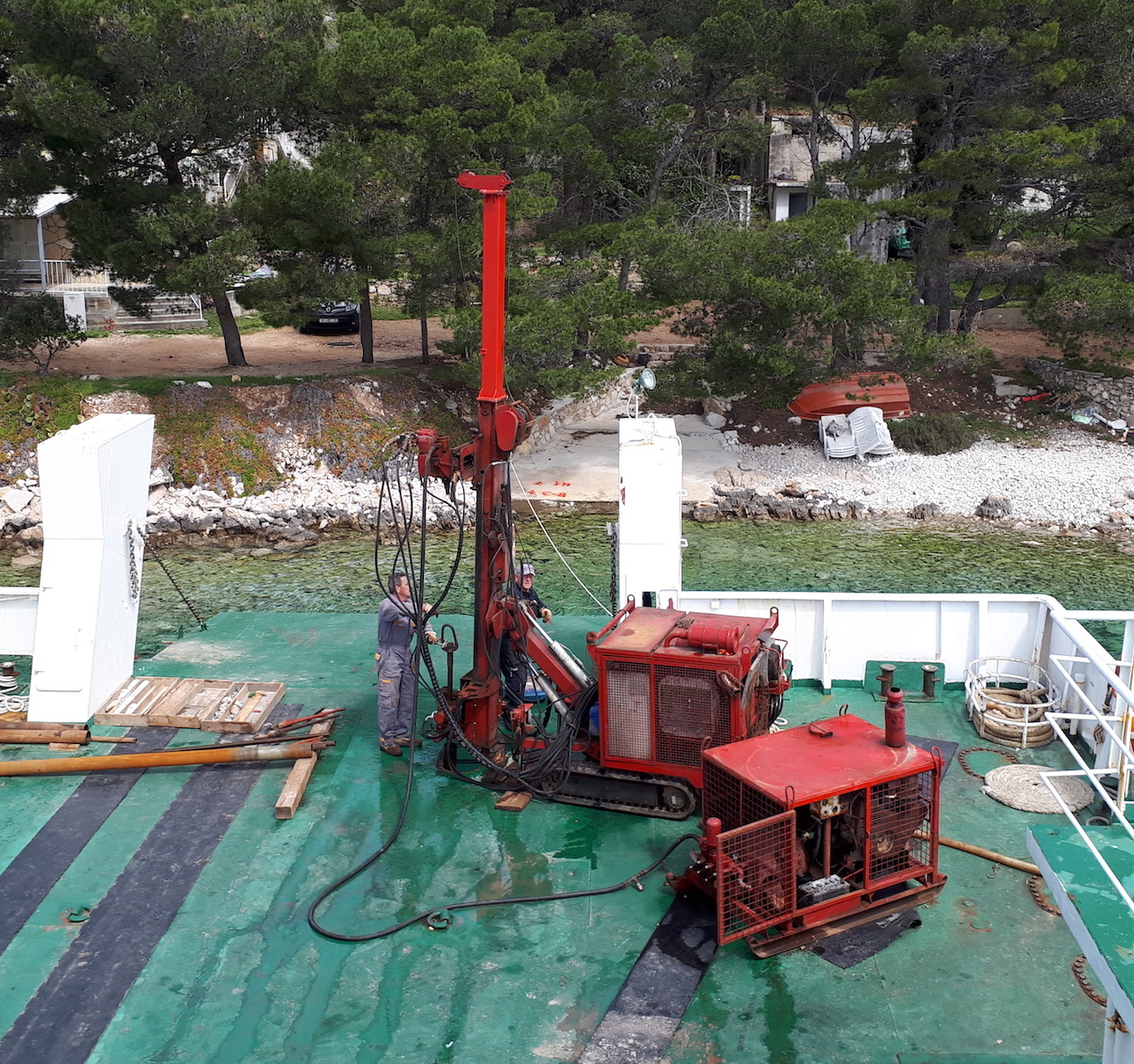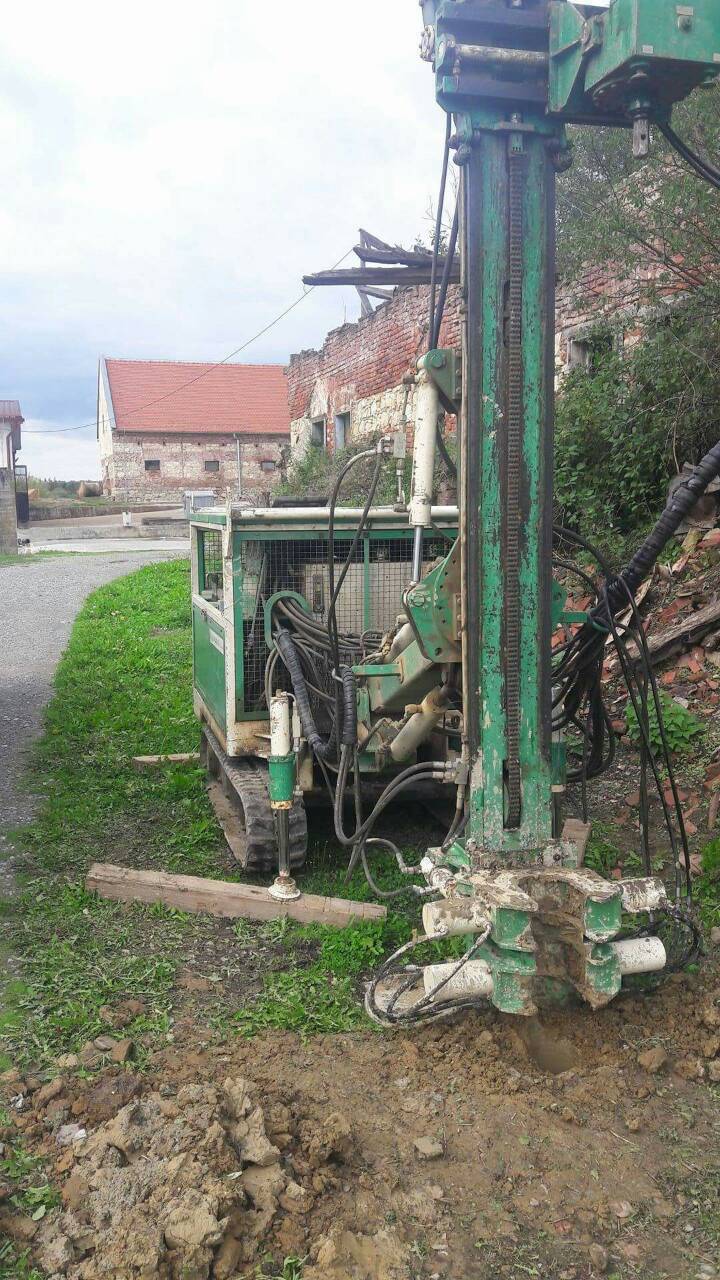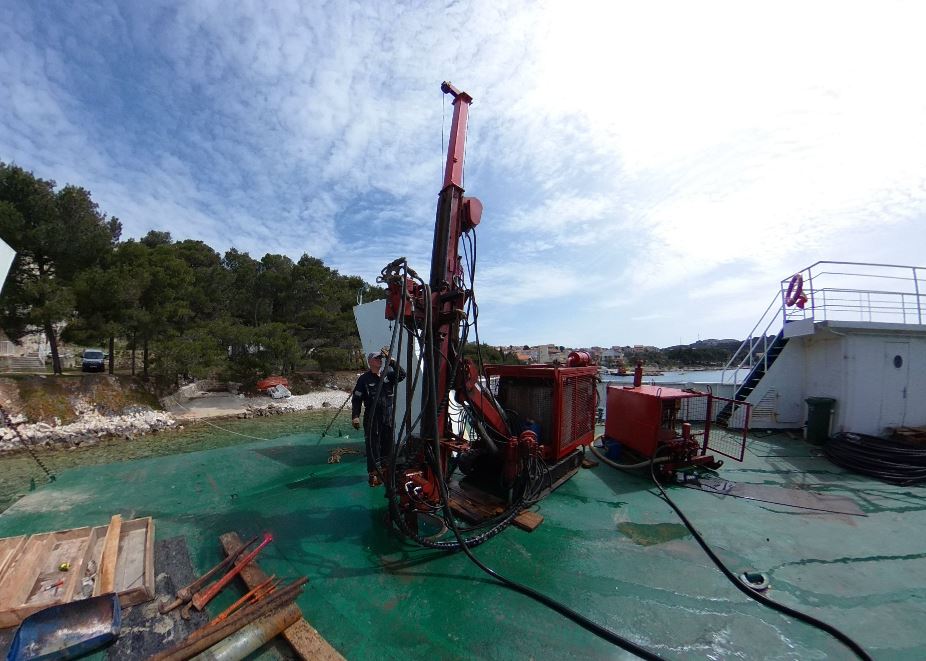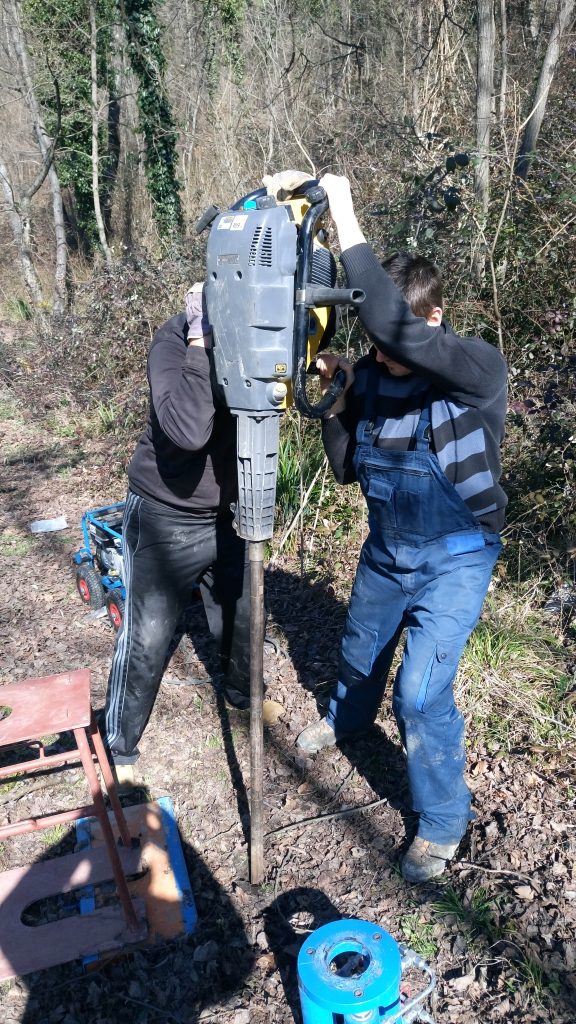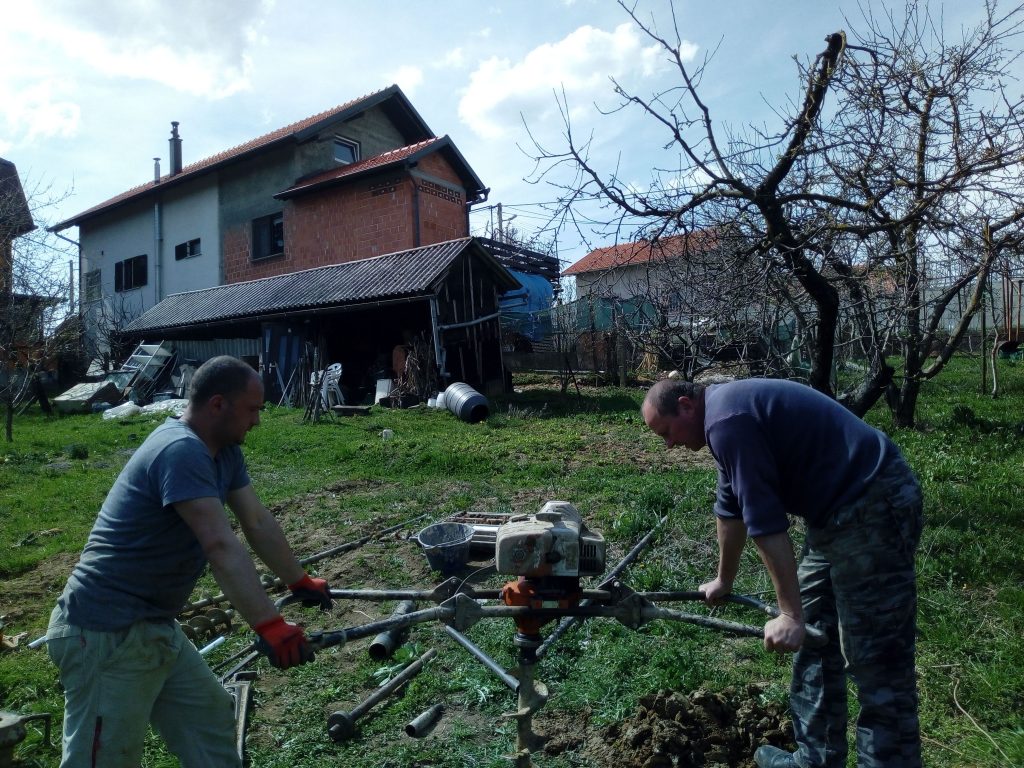Exploratory drilling
Exploratory drilling represents common underground research methods in geotechnical investigation works. It provides visual insight into the geological and geotechnical profile of the explored site. The most important result of the exploratory drilling is the drilling core that represents the depth profile of the studied position.
In the way of performance, we differentiate the following types of exploratory drilling:
• Rotary drilling – Drill tool rotates mechanically and hydraulically impinges on the surface of the terrain with hollow drill pipe
• Percussion drilling – represents the method of machine or manual exploration drilling, by impacting the hollow drill pipe from the surface of the terrain by means of machine tools
• Spiral drilling– a method of machine or manual exploration drilling using a steel flat spiral fixed on a drill pipe, which is coiled with a spiral to the ground,
• Prospect drilling – a drill bit is used for rotary drilling with a full bore without core drilling. Prospect drilling is used to determine the thickness of the cover.
From abovementioned of drilling methods, only rotary drilling can be performed in hard rocks mass, while other drilling methods can be performed in the weak rocks mass. Regardless of the drilling method, the borehole can be protected by a protective tube (colony) from collapsing when passing through sand or gravel or from extrusion when passing through soft clay layers.
The borehole profile
After core extraction from the exploration borehole, the geologist and / or geotechnical engineers examine and describe the borehole profile by visual and simple in-situ tests.
The borehole profile includes depth tags, ground types, layer changes, extensive description of the types and characteristics of individual layers and standard markings according to the unique design. In addition, the data on drilling tests, such as standard and static probe testing and vane testing, as well as lab tests such as consistency limits, natural humidity, volume weight etc. are included in the profile. Such complex results provide accurate insight into the sequence and the properties of certain layers at different ground depths.
In addition to testing and determination drill core, exploratory drilling also enables:
• Measurement of the occurrence and groundwater level,
• Testing the permeability of a certain layer or horizon ground,
• Inclinometer installation for the purpose of tracking the horizontal displacement of the terrain,
• Piezometer installation for the purpose of monitoring the pore pressure,
• Installation of measuring devices to determine the geothermal parameters of the borehole profile
SaveSave
SaveSave
SaveSave
SaveSave
SaveSave
